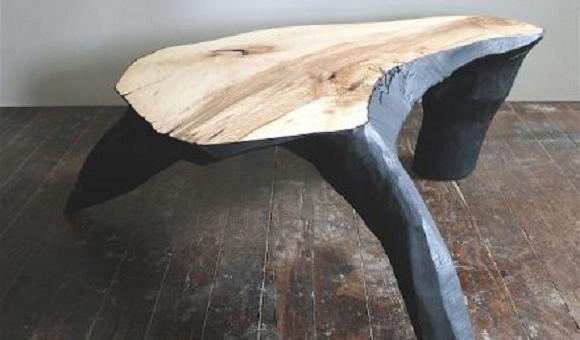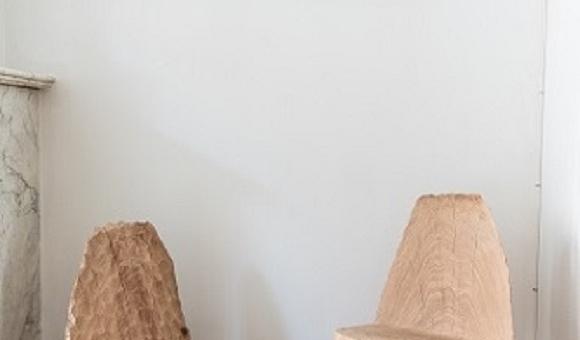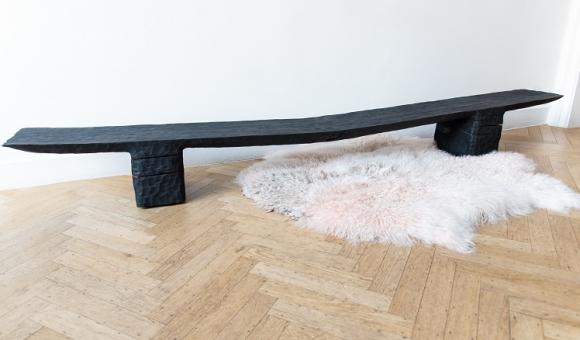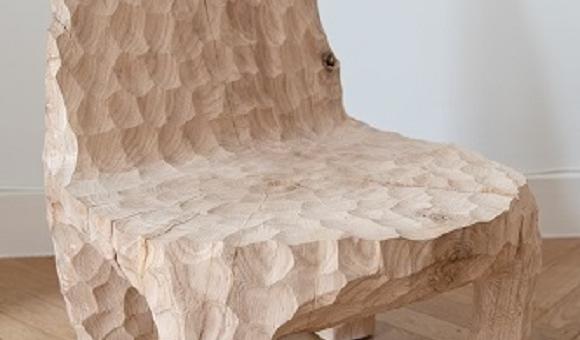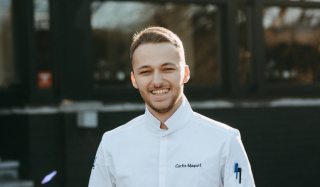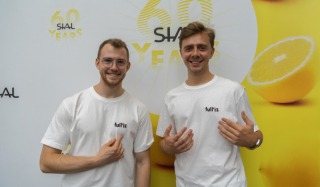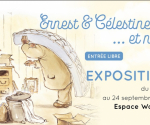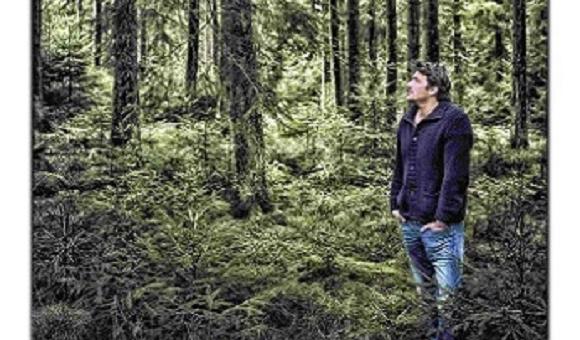
The workshop of 37-year-old Kaspar Hamacher is tucked away in the village of Raeren, in the Eastern Cantons of Belgium, just a few minutes from the German border. There, in a rough-hewn place, the floor covered in sawdust from the wood that is his preferred material, we met with this man with an almost outsized appetite for work.
How do you define yourself? As an artist? A craftsman? A designer?
A bit of all three, I suppose. What does it matter? Why do we need to be put into a box? What I want is to be free and to work in that direction.
Your pieces in raw wood celebrate the material, the manual work and the applied arts. Where did your vocation come from?
My father was a forest ranger. I grew up in the countryside, in the middle of the woods, in direct contact with nature. From a very young age, I was very interested in the work of Constantin Brancusi. My dream was to be like him. After my initial training in woodworking at Aachen, I felt the need to temporarily leave that environment. I began design studies in Maastricht, then I worked as the shop foreman at Casimir in Houthalen. It was during that period, around 2008, that the gallery owners and design consultants started showing interest in my work. Suddenly, I understood that I had potential as an artist.
Underneath your rather rebellious attitude, you had a very rewarding career start. What were the important steps in your journey?
Definitely, the encouragement of Bram Boo and Giovanna Massoni, as well as winning the Henri Van de Velde award in 2011, allowed me to unlock certain things within me. I needed someone to give my work a certain legitimacy in order to move forward.
Kaspar HamacherWhile you were studying in Maastricht, you explored other techniques (glass, ceramics, plastic). When you came back to wood, did you see it in a different way?
What interests me is exploring all of the frontiers of this material. By burning it, on the one hand, but also by experimenting with new ways of cutting it. My field of exploration is very wide. Otherwise, I would get bored. I worked for a while in Brussels as a designer, but it wasn't for me. I need to be here, in my workshop, in contact with the wood. I mostly work with local species, especially oak.
Your work is very utilitarian. Alongside certain pieces such as "Stein" – very sculptural pebbles – you create tables, chairs, benches, stools, etc.
I am not interested in creating design icons. I want my pieces to be touched and used. People have lost contact with the material and with nature. This is why it is so important to put the human at the centre of my work.
You participate, with the support of WBDM, amongst others, at international salons. How do you see this highlighting of your work?
Thanks to these salons, but also to the galleries that represent me in Belgium and abroad, such as Spazio Nobile (BE) and Almond & Co (US), my pieces are enjoying real success in Paris, London and the US. I need this visibility to reach an audience of buyers and collectors, but also architects and interior designers like Pierre Yovanovich in Paris or Jean-Philippe Demeyer in Knokke, both of whom I have worked with.
You speak in a very direct way; you don't waste your time with complicated messages.
My pieces need to speak for themselves. Even if burnt wood has a strong symbolism, it never takes precedence over the functional aspect of my pieces.
Despite this pronounced pragmatism and local roots, your work does well abroad.
I am very proud that my pieces have become part of the collections of several museums, even during my lifetime. This recognition encourages me to continue my artistic exploration in unique pieces that can be out of the ordinary, yet very often have a functional character. As soon as I have an idea in mind, I need to realise it. Immediately. For the moment, I am especially inspired by Japan. I lean towards very clean lines. For the future, I also feel the need to move towards increasingly raw, imposing and sculptural pieces. For the end of 2021, I am preparing a solo show at the CID Hornu: a carte blanche I have been waiting for a long time, and which will allow me to freely express my ambition as an artist and sculptor-designer.
We understand, you don't like blabla. This includes ecological blabla, we imagine...
I have always tried to create pieces that will last longer than one lifetime. But I don't care about all the marketing surrounding the ecological trend. I again prefer to concentrate on my work, on the search for balance that is at the centre of my approach.
Interview by Marie Honnay
Further information
Partners for this activity
Wallonie-Bruxelles Design Mode is closely collaborating with TLmag for interviewing a selection of Belgian talents in fashion and design from Wallonia and Brussels, in order to promote them on the international scene.
Read more articles on TL Magazine.
